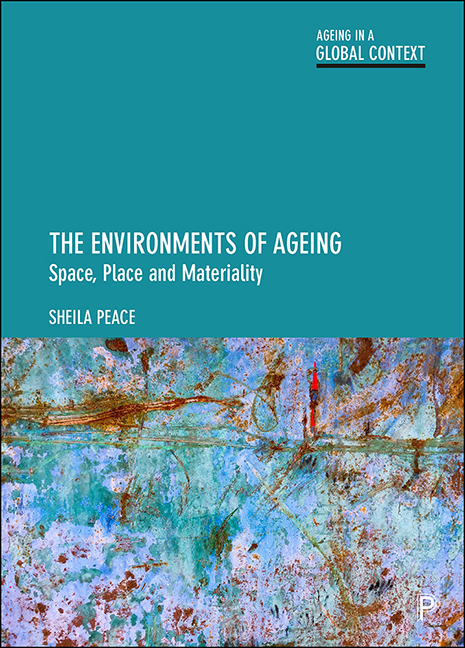Book contents
- Frontmatter
- Dedication
- Contents
- List of figures and tables
- Research summaries
- List of acronyms
- About the author
- Acknowledgements
- Series editors’ preface
- Preface: understanding the structure
- 1 Person and environment
- 2 Theoretical development
- 3 The global context
- 4 Environmental living
- 5 Housing in later life
- 6 Housing histories, housing options
- 7 Alternative environments: specialised housing (with care)
- 8 Care home living: a form of long-term care
- 9 Methodological development
- 10 Rethinking the spatiality of ageing
- Glossary of terms
- References
- Index
Series editors’ preface
Published online by Cambridge University Press: 15 September 2022
- Frontmatter
- Dedication
- Contents
- List of figures and tables
- Research summaries
- List of acronyms
- About the author
- Acknowledgements
- Series editors’ preface
- Preface: understanding the structure
- 1 Person and environment
- 2 Theoretical development
- 3 The global context
- 4 Environmental living
- 5 Housing in later life
- 6 Housing histories, housing options
- 7 Alternative environments: specialised housing (with care)
- 8 Care home living: a form of long-term care
- 9 Methodological development
- 10 Rethinking the spatiality of ageing
- Glossary of terms
- References
- Index
Summary
Demographic ageing and the increasing numbers and growing diversity of older people across world regions are raising new issues and concerns for consideration by academics, policy makers and health and social care professionals around the world. Ageing in a Global Context is a book series, published by Policy Press in association with the British Society of Gerontology, that aims to influence and transform debates in what is a rapidly changing field in research and policy. The series seeks to achieve its aims in three main ways. First, the series publishes books which set out to re-think some of the fundamental questions which shape debates in the study of ageing. This has become particularly important within the context of the restructuring of welfare states, especially in the Global North, and the growing complexity of population change. Each of these elements opens up the need to explore themes which reach beyond traditional perspectives in social gerontology. Second, the series represents a response to the impact of globalisation and related processes, which are contributing to the erosion of the national boundaries that originally framed the study of ageing. This is reflected in the increasing scope and breadth of issues that are explored in contributions to the series, for example: the impact of transnational migration, growing ethnic and cultural diversity, new types of inequality, changing personal and family ties and themes relating to ageing in different environmental contexts. Third, a major concern of the Ageing in a Global Context series is to explore interdisciplinary connections in gerontology. Contributions to the series provide a critical assessment of the disciplinary boundaries and territories that influence the study of ageing, creating in the process new perspectives and approaches relevant to the 21st century.
Against this background, we are delighted that Sheila Peace has written an exciting book that responds so well to the overarching aims of our series. As might be expected of a scholar whose work has helped to shape the interdisciplinary field of environmental gerontology since the 1970s, The Environments of Ageing breaks new ground in conceptualising the spatiality of later life. Its focus is on the contrasting environments, ranging from the specific characteristics of spaces within the home setting to key features of global cities, which influence personal experiences and have a powerful bearing on wellbeing in older age.
- Type
- Chapter
- Information
- The Environments of AgeingSpace, Place and Materiality, pp. xiii - xivPublisher: Bristol University PressPrint publication year: 2022

